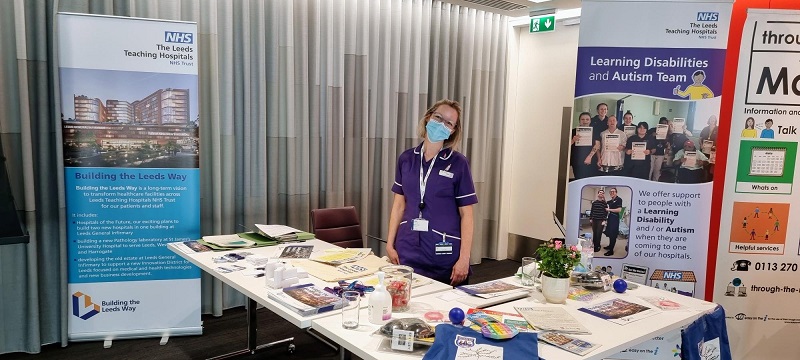Team holds stakeholder sessions to inform design of new children and adult hospitals in Leeds

People with learning disabilities and autism have been helping to shape the new hospital development at Leeds Teaching Hospitals NHS Trust.
Over the past month, almost 500 people have been engaged as part of a widespread consultation seeking views on what should be included in the new home for Leeds Children’s Hospital and the new adult hospital planned to be built at the Leeds General Infirmary (LGI) site.
The Building the Leeds Way team – which is responsible for delivering the two new hospitals – has been working closely with the trust’s learning disabilities specialists to canvas the views of patients and service users to ensure the new hospitals are fit for purpose and accessible to all.
As part of the consultation, the teams have been surveying those who attended the People’s Parliament event at Leeds City Council, Picnic in the Park at Temple Newsam, and the Leeds Autism Show at Sovereign Square in Leeds city centre.
People with learning disabilities and/or autism are more likely to attend acute hospitals and many do find the nature of the hospital environment challenging
A popular request from service users was for more green space, as well as uplifting artwork within the new buildings – which are already being factored into the designs.
Other feedback included bringing nature indoors, lots of seating both outside and inside the buildings, an activity wall, and a water feature.
Mike Bacon, programme director for Building the Leeds Way, said: “Ensuring the two new hospitals can meet the needs and aspirations of the diverse communities that the trust serves across Leeds and the wider region, is absolutely critical.
“The engagement with our learning disability and autism community has helped us to gain further invaluable feedback surrounding external and interior design directly from those who use our hospitals.
“We look forward to reviewing all the comments and ideas that have been put forward to help us shape the future of our new hospitals and continuing such engagement as we move through our design and construction process.”
Alison Conyers, lead professional from the trust’s learning disability and autism team, added: “People with learning disabilities and/or autism are more likely to attend acute hospitals and many do find the nature of the hospital environment challenging.
“It's been fantastic to hear some of the brilliant ideas from people and their own personal experiences of hospital care will be used to create a better environment for everyone.
“By continuing to engage with people with learning disabilities, autism, and the people who support them, we can continue to make sure that the new hospitals offer better access to care.”